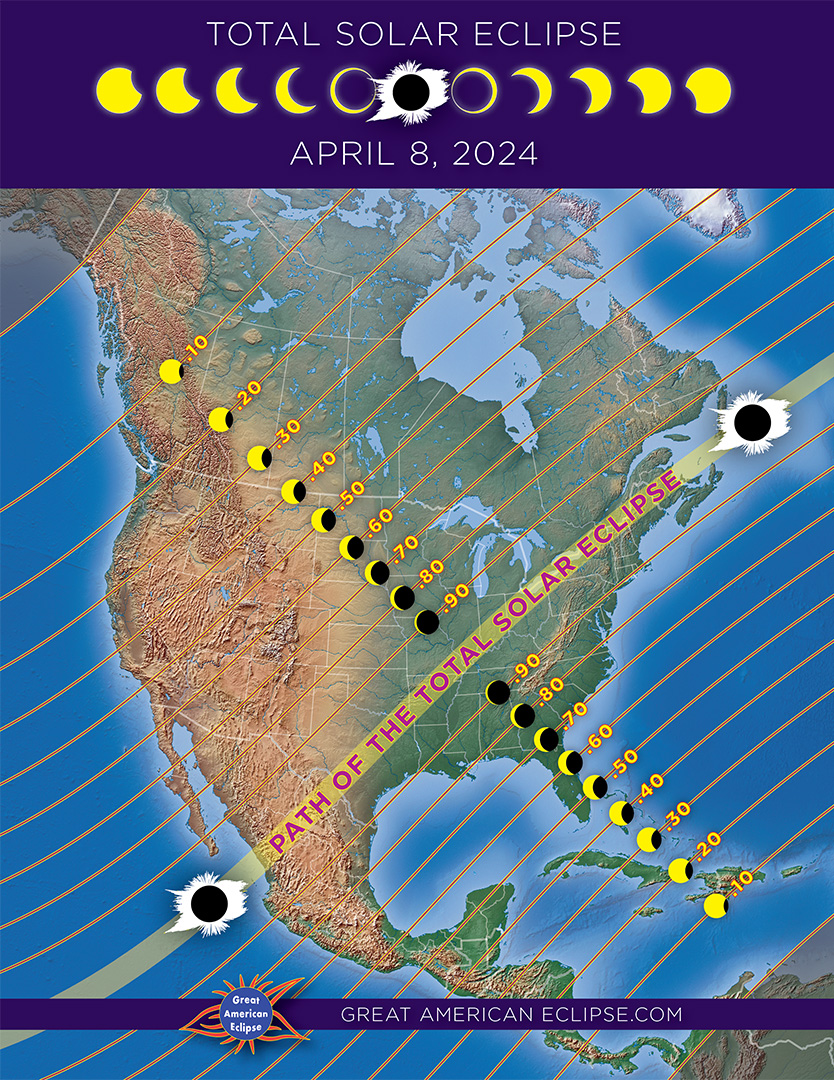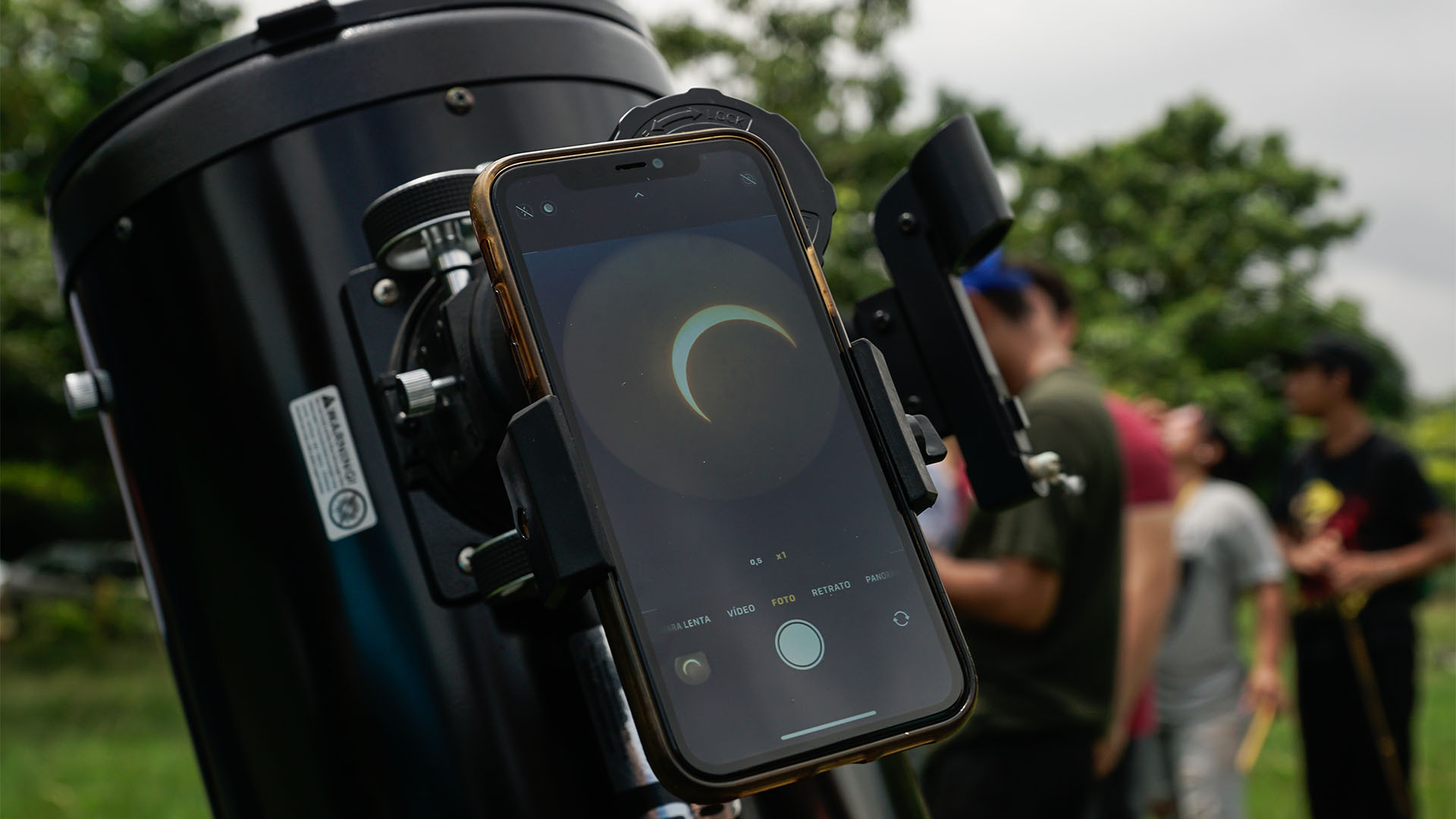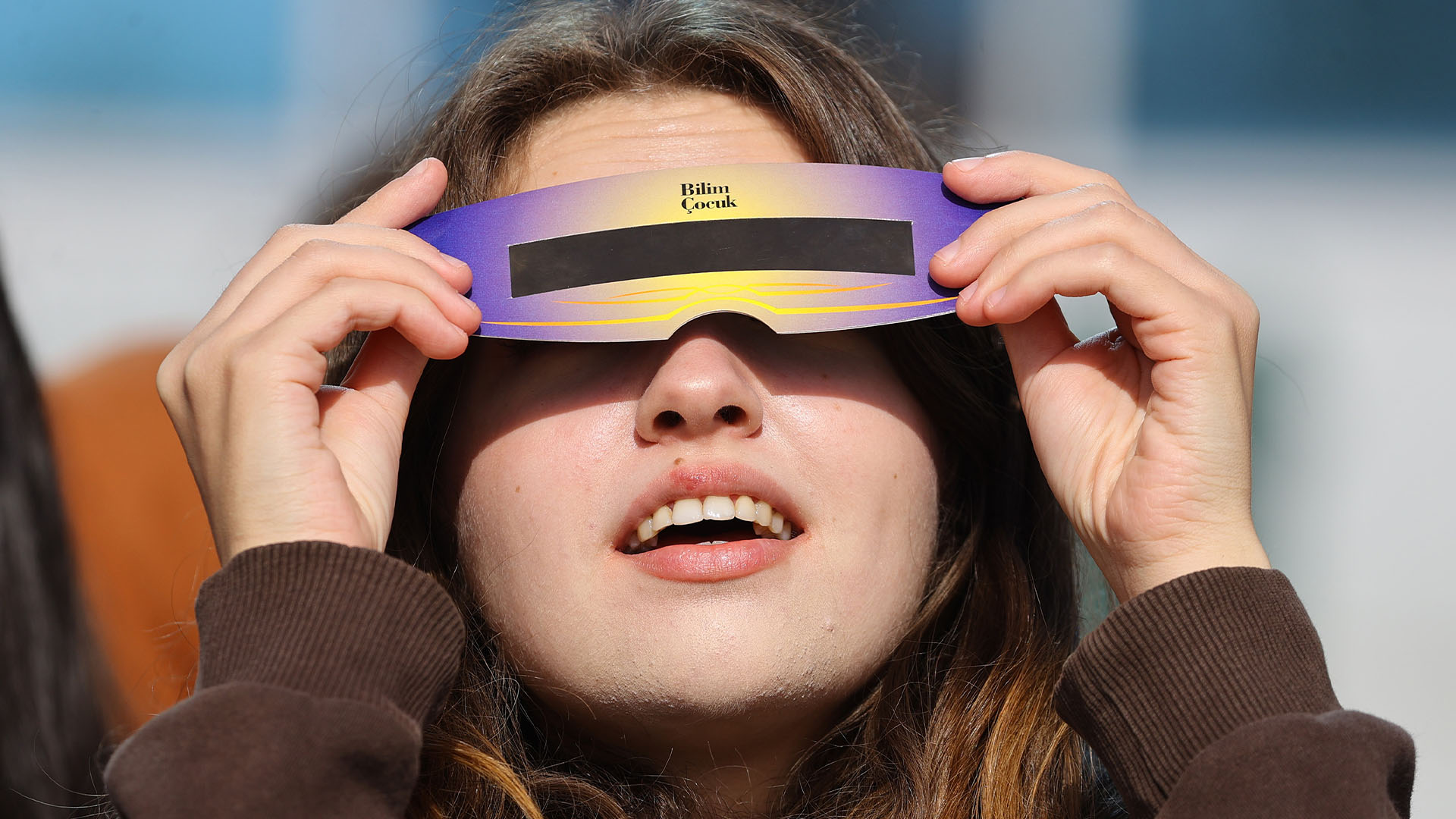7 safe ways to view the partial phases of today's total solar eclipse
From solar eclipse glasses and viewers to solar binoculars and pinhole projection, there are plenty of ways to safely follow the moon's progress across the sun on April 8.

During today's total solar eclipse, the only time it is safe to look at the sun without proper eye protection is during totality — the thrilling period when the entire disk of the sun will be blocked by the moon for up to 4 minutes and 27 seconds, depending on the observer's location. This will be possible only within a narrow path of totality through North America.
Everyone outside this path, as well as those within it, will need to use solar glasses or other methods to view the much longer partial phase of the solar eclipse, which will last roughly an hour and 20 minutes before and after totality.

Thankfully, there are plenty of ways to enjoy the partial phases of the eclipse without putting your eyes at risk. Here are seven easy ways to safely watch today's partial eclipse.
1. Solar eclipse glasses
To be safe, solar eclipse glasses must pass the ISO 12312-2 certification process. You'll see this certification printed on the arms of solar eclipse glasses, but the only way to guarantee that your solar eclipse glasses are safe is to purchase them from a provider that has been vetted by the American Astronomical Society (AAS). Online vendors like Amazon and eBay should generally be avoided.
It will be too late to purchase a pair online that will arrive before the eclipse starts, but many local libraries on the path of totality will also be distributing free eclipse glasses while supplies last; check with your local branch to see if they're participating. You might also be lucky enough to find a pair in stores, but please check our guide on how to find approved solar eclipse glasses and avoid any that may potentially damage your eyesight.
Related: 10 weird things that happen during a solar eclipse
2. Handheld solar viewers
These small squares of cardboard have a window of the same solar safety film used to make eclipse glasses, so they can be used in the same way. As a bonus, you can punch a hole in the side and wear them around your neck using a lanyard. You can find a list of approved vendors from the AAS.
Get the world’s most fascinating discoveries delivered straight to your inbox.
3. Cameras, binoculars or telescopes fitted with solar filters
Another safe way of looking at a partial solar eclipse is through binoculars or a telescope fitted with a certified safe solar filter designed specifically for the task. The filter must go on the objective lens. Never look at the eclipse through unfiltered cameras, binoculars or telescopes, and never use this method while you're wearing eclipse glasses or using a handheld solar viewer. The concentrated solar rays will burn through the filter and cause serious eye injury, according to NASA.
4. H-alpha telescope
A hydrogen-alpha (H-alpha) telescope, a favorite of solar astronomers, transmits only one specific wavelength of light. You'll see sunspots and prominences (large, bright features that writhe and loop out of the sun’s surface) through it. An eclipse adds some drama to the view, but you can use it on any clear day to look safely at the sun.
5. Solar binoculars
With built-in solar filters on their objective lenses, solar binoculars are designed specifically for observing partial solar eclipses. Some use polymer solar filters for a white view of the sun, while others use glass filters for a yellow-orange sun. Make sure they're ISO 12312-2 compliant.
6. Pinhole projector
Although you can make your own pinhole camera at home, an easier and quicker way to view the partial solar eclipse indirectly is to use a colander or spaghetti soon. The perfectly uniform holes will project small crescent suns onto the floor, the walls — and each other. Some astronomers also recommend using a disco ball to project dozens of tiny suns onto nearby surfaces.
7. Livestreams
It will take you out of the moment, but a safe way to observe the sun during a partial solar eclipse is online. Planned livestreams from Exploratorium, Time and Date and NASA TV could be particularly handy if it's cloudy where you are on April 8 — or if you find yourself far away from North America.

Jamie Carter is a freelance journalist and regular Live Science contributor based in Cardiff, U.K. He is the author of A Stargazing Program For Beginners and lectures on astronomy and the natural world. Jamie regularly writes for Space.com, TechRadar.com, Forbes Science, BBC Wildlife magazine and Scientific American, and many others. He edits WhenIsTheNextEclipse.com.




